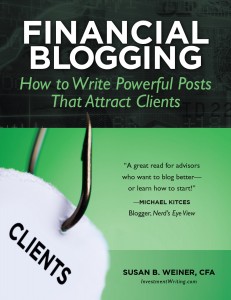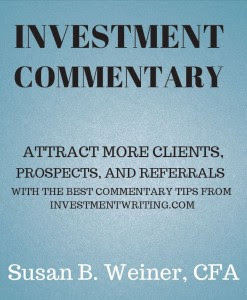Nov. newsletter: Fewer or less?
Happy Thanksgiving to my U.S. readers! I hope you enjoy a nice holiday later this month.
Fewer versus less
Which should you use—“fewer” or “less”? The Merriam-Webster Dictionary explains the rule clearly:
Generally, fewer is used when a number of things can be counted (“fewer problems”) and less is used when an amount is measured (“less trouble” or “less time”).
Of course, there are exceptions that complicate things. For more insights into the topic of fewer versus less, see
- “What’s the Difference between Less and Fewer?” from Grammarly
- “‘Less’ Versus ‘Fewer’” from Grammar Girl, which gives you a tip involving singular versus plural
- “Fewer vs. Less: Should I Use Fewer or Less?” from Grammar Book provides a quiz on the usage of less versus fewer
Medicare open enrollment
With Medicare open enrollment in process, it’s a good time to remind your clients about SHIP, the free, unbiased Medicare insurance counseling service.
If you or your clients would like to understand Medicare better, check out free newsletters from sources like 65 Incorporated and Healthassist.
Avoid the taint of AI
Find some helpful tips on how to avoid publishing content that reads like it has been written using generative artificial intelligence (AI). Read “How to Edit the AI-isms Out of Your Content (No Detectors Needed)” on the Contently blog.
I especially like the tips to “Insert local or unique details” and “Increase use of expert quotes or original input.”
The article cites one sign of AI intervention that doesn’t apply to investment and wealth management content. It warns against hedging language, “terms or phrases that weaken the assertiveness of a statement and make it less absolute.” If you’ve worked in financial services for a while, you know that your compliance professionals love hedging language. It does protect you and your readers.
Winslow Homer at the MFA
Check out the beautiful exhibit of Winslow Homer watercolors at the Boston Museum of Fine Arts. It runs until Jan. 19, 2026.

Winslow Homer exhibit at the Boston Museum of Fine Arts
Financial Blogging, my five-star-rated book
 Here’s what advisors say about my book.
Here’s what advisors say about my book.
- A great read for advisors who want to blog better—or learn how to start!
Michael Kitces, Nerd’s Eye View - Susan’s words have helped me hone my message and become clearer in my explanations. Through my dedication to blogging, my business has grown as a result. I owe much of my success in business to Susan’s teaching and guidance.
Dave Grant, Finance for Teachers - I wish I had read Susan’s Financial Blogging before I produced 300 weekly posts. There was a lot of practical advice in a slim guide to producing effective blogs. The blog preparation work sheets should be of particular value to an author who wishes to get smart people to do smart things with their money. My posts will be better for having read the book.
A. Michael Lipper, Mike Lipper’s blog
What my clients say about me
 “Fast, effective, insightful. I can think of no better resource for superior financial writing.”
“Fast, effective, insightful. I can think of no better resource for superior financial writing.”
“Susan has an exceptional ability to tailor investment communications to the sophistication level of any audience. She has an uncanny ability to make very complex investment and/or economic topics accessible and understandable to anyone.”
“Susan’s particularly good at working through highly technical material very quickly. That’s very important in this business. A lot of people are good writers, but they have an extensive learning curve for something they’re unfamiliar with. Susan was able to jump very quickly into technical material.”
Improve your investment commentary
Attract more clients, prospects, and referral sources by improving your investment commentary with 44 pages of the best tips from the InvestmentWriting.com blog.
Tips include how to organize your thoughts, edit for the “big picture,” edit line by line, and get more mileage out of your commentary.
Available in PDF format for only $9.99. Email me to buy it now!
Boost your blogging now!
Financial Blogging: How to Write Powerful Posts That Attract Clients is available for purchase as a PDF ($39) or a paperback ($49, affiliate link).








